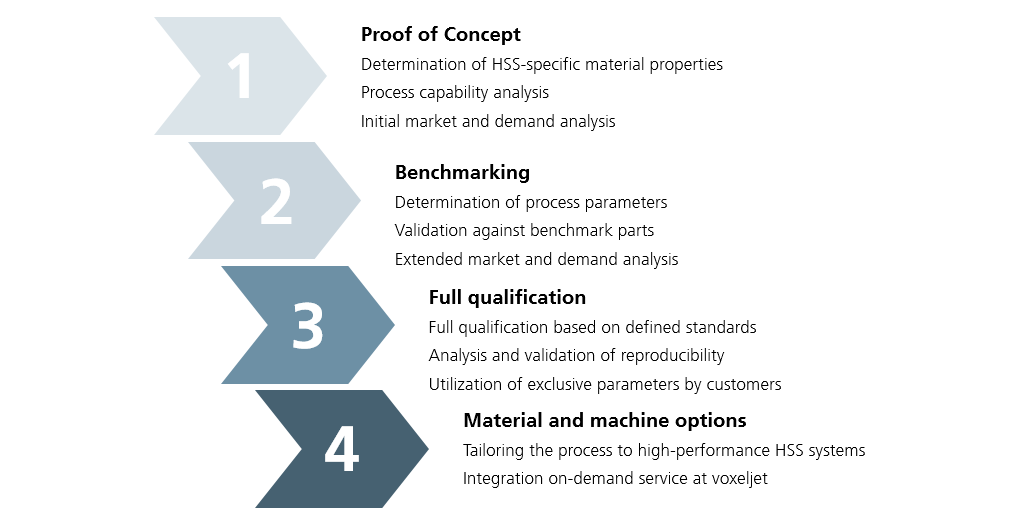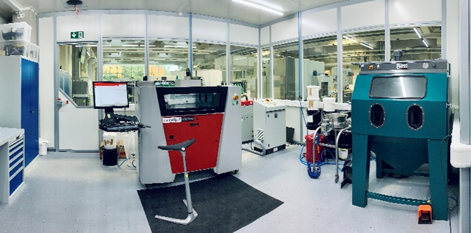The innovative additive manufacturing process "High Speed Sintering (HSS)" enables the industrial production of polymer components with highly complex geometries while maintaining high quality and cost-effectiveness. In addition to its high reproducibility and the ability to use a broad range of polymers, the scalability of the HSS process offers significant potential for industrial applications.
The layer-by-layer process of HSS is as follows: First, a recoater applies a layer of polymer powder to the build platform (powder application). Then, an infrared-absorbing ink is selectively applied to the areas that are to be fused (ink application). Subsequently, an infrared lamp passes over the powder bed surface (selective energy input). The ink absorbs the infrared radiation, raising the temperature of the polymer powder contacted with ink above its melting point. This partially melts the polymer powder. These steps are repeated until the layer-by-layer process is completed (finishing).
 Fraunhofer Project Group Process Innovation
Fraunhofer Project Group Process Innovation


